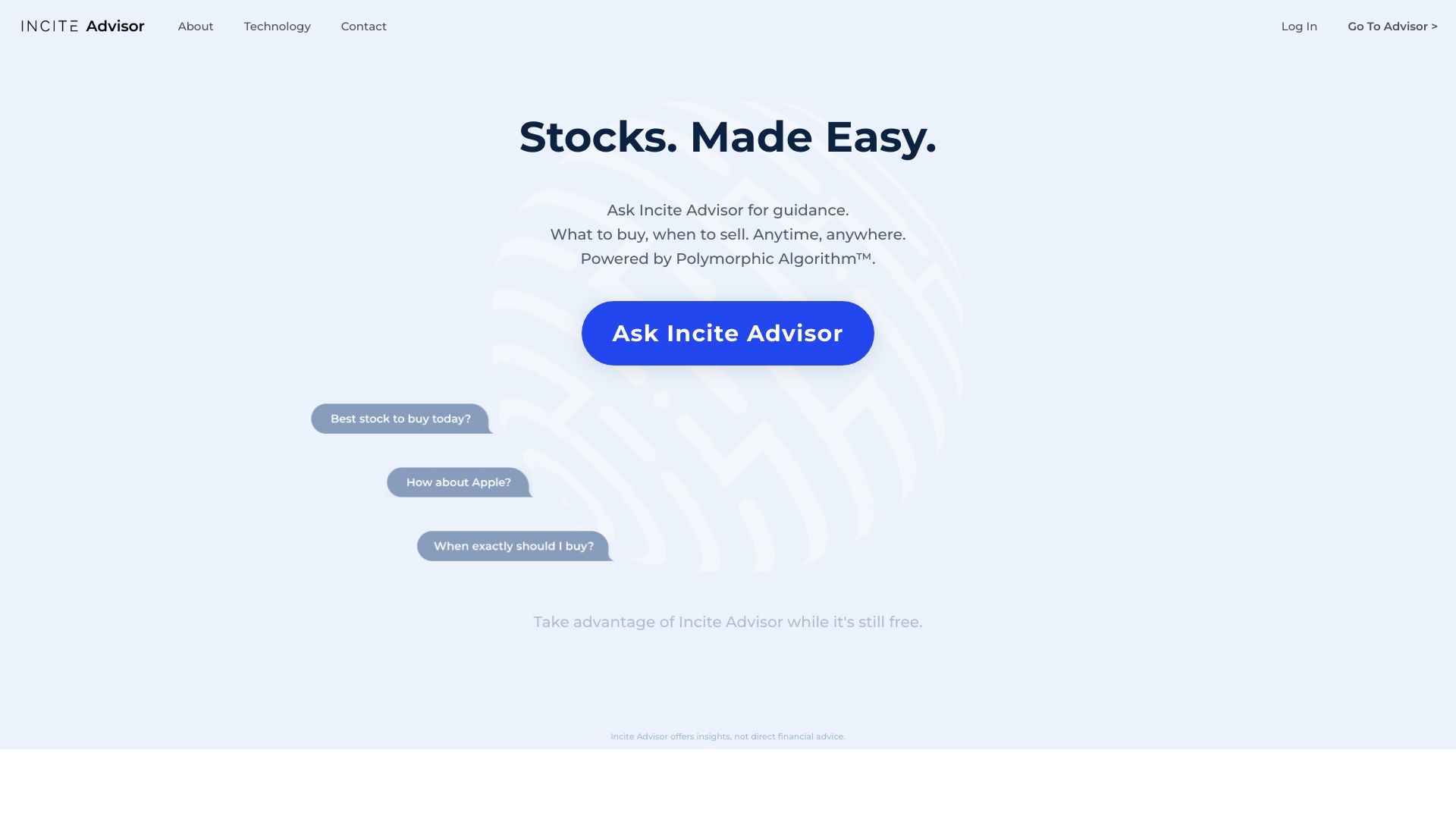Integration and compatibility are critical factors when evaluating AI platforms for analyzing and predicting stocks. Integrating your platform with the existing tools, systems, and workflows is a excellent way to improve efficiency. Here are our top 10 tips on how to assess the compatibility and the integration of these platforms.
1. Check Brokerage Integration
Check that your platform works seamlessly with the trading or brokerage service you want.
Trade execution: Find out whether the platform supports direct trade execution using the integrated broker.
Account synchronization: Find out whether the platform is able to sync accounts' balances, positions and transaction history in real time.
2. Check the API's availability
API access - Make sure that the platform has an API to allow developers to create customized tools or automate work flows.
API documentation: Ensure the API is well documented by providing examples and usage-cases.
Rate limits: Check if your API has reasonable rates limits which can accommodate the amount of use you anticipate.
3. Examine the Third-Party Tool Integration
Popular tools: Find out whether your device is compatible with the most popular tools such as Google Sheets or Excel.
Import and export of data - Check that the platform allows for simple data export or import to/from other tools.
Plugins/Extensions: Check if your platform supports extensions and plugins that can provide additional functionality.
4. Test Compatibility Using Operating Systems
Desktop compatibility is important. Check that your system works on the operating system you prefer (Windows MacOS Linux).
Mobile compatibility Check whether the platform offers an app that works with iOS or Android.
Web-based: If you want to be able to adapt, check if your platform can also be used with an ordinary web browser.
5. Evaluating Data Integrity Capabilities
Data sources: Make sure that the platform integrates with a variety of data sources (e.g. market data sources or news feeds).
Real-time analytics: Ensure that the platform incorporates real-time analytics.
Import historical data: Determine whether the platform allows import of historical data to analyze or backtest.
6. Examine cloud and On-Premise compatible
Cloud-based platform: Accessible from anywhere, with an internet connection.
On-premises deployment: Make sure you know the platform you're using is compatible with deployment on premises.
Make sure the platform is hybrid options that combine both on premises and cloud capabilities.
7. Make sure to check for Cross Platform Syncronization
Device synchronization. Make sure that settings and data are synchronized across all platforms (desktops mobiles tablets).
Make sure that any changes made to one device are immediately reflected on the other devices.
Offline Access: Check for any limitations on the platform's functionality or access to data when it is offline.
8. Check the compatibility of trading strategies
Algorithmic trading: Check that the platform supports automated or algorithmic trading strategies.
Custom indicators: Determine whether you are allowed to use custom indicators or scripts.
Strategy backtesting: Check if the platform supports backtesting strategies for trading using historical data.
9. Assess Security and Compliance
Data encryption: Ensure that the platform uses encryption both for data in transit and in rest.
Authentication Check to determine if your platform is compatible with an authenticated method that is secure (e.g. 2-factor authentication).
Regulatory compliance: Verify that the platform is compliant with relevant regulations (e.g. GDPR, FINRA or SEC).
10. Test Scalability, Performance, and Efficiency
Scalability: Ensure the platform can handle growing amounts of users and data as your requirements increase.
Performance when under load: Find out whether your platform can adapt to high volatility market conditions.
Resource usage: Make sure your system makes use of system resources like memory, CPU and bandwidth.
Bonus Tips
Feedback from customers: Read user reviews and testimonials in order to determine the integration capabilities of the platform.
Free trial period: You can try a demo or a free trial to test the compatibility of the platform to your existing workflows and applications.
Customer support: Make sure that your platform has a solid customer support for integration-related issues.
You can evaluate the integration, compatibility, and efficiency of AI stock trading platforms by following these guidelines. View the recommended view website on AI stock trading app for website advice including AI stock, ai investing platform, AI stock market, ai investing, AI stock picker, ai for stock trading, ai for trading, AI stock trading bot free, AI stock market, trading ai and more.

Top 10 Suggestions When Evaluating Ai Trading Platforms To Evaluate Their Community And Social Features
To understand how users learn, interact, and share knowledge in a community It is important to analyze the social and community features of AI trade and stock prediction platforms. These features can enhance the user's experience as providing valuable support. These are the top ten tips to evaluate community and social aspects on such platforms.
1. Active User Community
Tip: Check if the platform has a active community of users who regularly participate in discussions, provides insights, and provides feedback.
Why: A lively community is a place where members can develop and share knowledge.
2. Discussion Forums and Boards
You can assess the effectiveness of the quality of a message board by evaluating its activity levels.
Forums are a fantastic way for users to share thoughts, debate trends and also ask questions.
3. Social Media Integration
TIP: Determine if the platform works with social media channels (e.g., Twitter, LinkedIn) for sharing insights and news.
Why: Social media integration can enhance engagement and provide current market updates in real-time.
4. User-Generated Material
Look for features that enable users to create, share, and modify content.
The reason: User-generated content encourages collaboration and provides different perspectives.
5. Expert Contributions
Tips - Make sure the platform is populated with contributions from experts in the field, like market analysts and AI experts.
Why? Expert opinions add depth and credibility to community discussions.
6. Chat and messaging in real-time.
Tip: Check whether users can communicate with each other instantly by using real-time messaging or chat.
Why: Real-time interaction facilitates rapid information exchange and collaboration.
7. Community Moderation and Support
Tip: Assess the level of support and moderation in the community (e.g. moderators, moderators, customer support representatives).
The reason: Effective moderating makes sure that a positive and respectful atmosphere is maintained. user support resolves issues quickly.
8. Webinars and events
Tip - Check to see whether the platform provides live Q&A with experts as well as webinars, and other events.
What are the benefits: These events provide the opportunity to gain knowledge and provide direct contact with professionals in the industry.
9. User Reviews and Feedback
Check out platforms that let users leave reviews or feedback about their community features and platforms.
What's the reason? User input can help determine strengths and areas for improvement.
10. Rewards and gaming
TIP: Check whether the platform has gamification elements, such as leaderboards or badges.
Gamification is an effective way to motivate users' involvement with the community.
Tips for Privacy and Security
Use robust security and privacy measures when using the social and community features. This will help protect your data and interactions.
Through analyzing these elements, you can decide whether an AI-powered stock prediction and trading platform provides positive community that will improve your trading experience. See the top rated stocks ai recommendations for more advice including AI stock predictions, best stock prediction website, how to use ai for copyright trading, AI stock prediction, AI stock investing, free AI stock picker, AI stock trader, ai investment tools, invest ai, chart ai trading and more.
